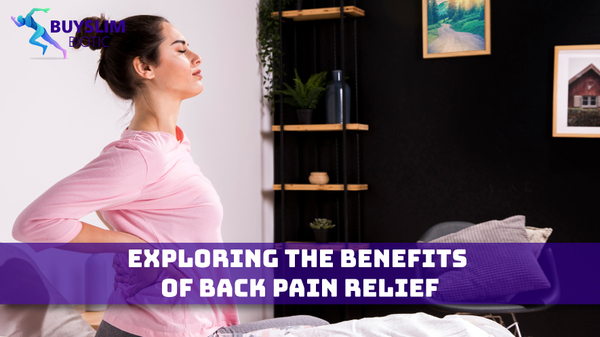Back pain is a common ailment that affects most people at some point in life. In most cases, the pain resolves itself with rest and conservative treatments like hot and cold therapy and over-the-counter medications.
If you don’t see improvement after a few days, consult with a doctor or physical therapist. They can teach you exercises that increase your flexibility, strength and body awareness to prevent the pain from reoccurring.
Over-the-Counter Medications
Back pain relief is the leading cause of years lived with disability worldwide, and most people who experience it reach for over-the-counter medications to help. But which are most effective? To answer this question, researchers gathered data from numerous Cochrane reviews and randomized clinical trials of non-prescription analgesics (acetaminophen, NSAIDs, topical creams, TENS units).
They found that ibuprofen (Advil, Motrin, PediaCare) and naproxen (Aleve, Naxen, Naprosyn, Stirlescent) provided more relief than other OTC medications. However, the most potent medication was a combination of an NSAID and a prescription muscle relaxant (e.g., Vicodin).
However, it's important to remember that pain relievers only mask the symptoms, not solve the underlying problem. Taking medication for chronic back pain may actually contribute to future flare-ups by decreasing the blood flow that heals injured tissue. Instead, focus on addressing the underlying causes of your back pain, such as stretching and strengthening your core muscles and changing behaviors like slouching when you sit to avoid increasing stress on the spine. And if your pain persists, speak to your doctor about trying other forms of treatment.
Massage
When you're feeling sore, getting a massage can help you get back to your usual activities sooner. The specialized movements in therapeutic massage manipulate the soft tissues of your body to decrease pain, improve flexibility and enhance the flow of blood throughout your system.
Some types of massage increase the flow of endorphins in your brain, which are chemicals that create feelings of euphoria and happiness. A therapeutic massage may also help your muscles and tendons become more flexible.
A study conducted on 66 people with lower back pain found that those who received four shiatsu massage treatments had less pain and reported greater trunk and pain flexion range of motion than the control group. This improvement was maintained at follow-up.
The study by Furlan et al4 showed that massage was superior to mobilization and to relaxation therapy (which includes exercise) for chronic nonspecific low back pain in terms of immediate and intermediate results. It also surpassed acupuncture at the long-term follow-up. Massage has been used in ancient cultures and continues to be a popular treatment for back pain.
Hot and Cold Therapy
Cold therapy works by promoting vasoconstriction, which reduces blood circulation and decreases inflammation. It also numbs sharp pain by interfering with the transmission of nerve impulses from the affected area to the brain. Cold treatments can be applied through electric heating pads, ice packs, a cold shower or even a cold bath.
Warm therapy, on the other hand, increases blood flow and promotes muscle relaxation. It also soothes chronic aches and pains, such as those that occur due to arthritis.
A 2021 article published in the journal Clinical Biomechanics notes that alternating hot and cold therapy is effective for treating back pain. However, it is important to note that overuse of either treatment could result in skin and tissue damage.
For instance, if you apply an ice pack directly on your skin for too long, you can cause tissue and muscle damage. Similarly, taking a cold plunge or shower for an extended period of time can put strain on the lungs and heart. This is why it is best to alternate between the two.
Exercise
Back pain is often relieved by exercises that strengthen the muscles of the core, and improve back flexibility. This type of exercise can also reduce stress and fatigue on the spine, helping prevent future episodes of back pain. Exercise is also important to help maintain a healthy weight, which can reduce the stress on the spine caused by excess body weight.
In addition, physical activity increases blood flow and nutrients to the soft tissues of the back, which help keep them healthy. Exercise can help alleviate back pain by promoting the release of endorphins, natural substances that relieve pain and elevate mood.
Regular exercise also promotes a healthy body weight, which helps to minimize stress on the back and other joints. In addition, exercise can strengthen the stomach and back muscles, which may help reduce the frequency of back pain episodes and ease the severity of the symptoms when they do occur. A balanced exercise routine should include a mix of strengthening and stretching exercises, as well as aerobic activities that elevate the heart rate.
Sleep
The sleep cycle plays a key role in back pain relief, ranging from preventing the condition from getting worse to providing restorative healing and improving overall quality of life. Unfortunately, back pain often keeps people from enjoying a restful night’s sleep, which can lead to additional health problems in the long term.
A lack of sleep can also exacerbate back pain by exaggerating spinal misalignments, making it more uncomfortable and increasing the likelihood of future flare-ups. To combat this, individuals suffering from back pain should consider incorporating exercise health into their routine, regularly switching sleeping positions, and incorporating relaxation techniques.
Conclusion
It’s recommended that back-pain sufferers avoid sleeping on their stomachs, as this position can strain the neck and cause excessive arching of the lower spine. Instead, sleeping on the back or side is a more advantageous option, as it allows for a more neutral posture and can be supplemented with pillows to reduce pressure points and maintain the spine’s natural curve. Using a medium-firm mattress has also been found to promote this type of sleep posture and provide optimal back support.



